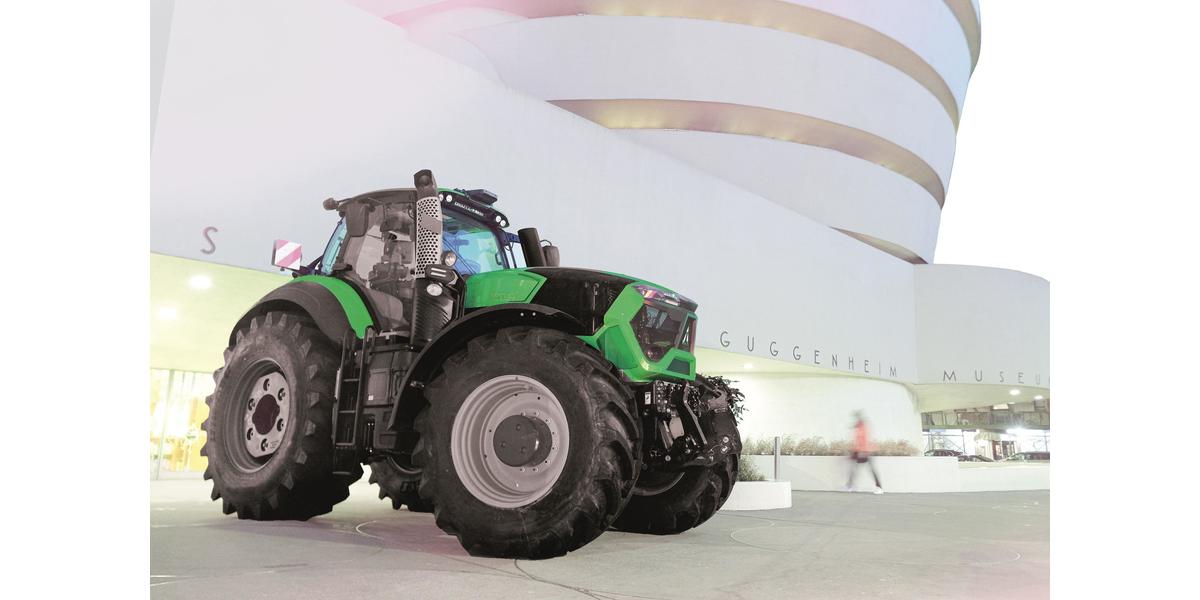As of February 20th, our heavy-duty green industrial tractor, remotely operable by computer, is parked on Fifth Avenue, and sits outside the main entrance of the Solomon R. Guggenheim Museum in New York, the arc of its fenders echoing the curves of Frank Lloyd Wright’s building. The museum is currently closed in response to the COVID-19 pandemic, but content related to Countryside, The Future is available at Guggenheim.org/countryside.
By any standard, the exhibition that the Guggenheim Museum has organised in collaboration with the architect Rem Koolhaas and his think tank, AMO, is unusual. That is quickly brought home exactly by the colossal object confronting visitors at the entrance to the New York museum: a 35,000-pound super-high-tech Deutz-Fahr tractor, placed next to a module in which 100 pounds of tomatoes are being grown weekly during the course of the exhibition beneath the optimized light of seemingly-pink LEDs.These two machines - impressive, and somewhat intimidating - are messengers from the countryside. Opposite is Central Park, carefully coiffured and terraformed to resemble a natural landscape.
If the presence of a tractor on Fifth Avenue seems absurdly out of place, that is because Rem Koolhaas wants city dwellers to stop neglecting the other 98 percent of the Earth’s surface that is not urban. And that’s why visitors are first made aware of the exhibition by the massive Deutz-Fahr tractor parked outside. We were happy to announce the exhibition with the brutal and rare presence in New York of a massive tractor, Koolhaas said.
Rem Koolhaas - architect, writer, visionnaire, agent provocateur - is a dedicated contrarian. After more than four decades of exploring urban environments, at the moment, when everyone else is thinking about the future of the city, he has popped up in the country. This is now the real focus of radical change, he suggests.
A full immersion project, which can certainly be discussed (just like the curators want), born from a very close relationship with universities (Harvard, Beijing, Wageningen, Nairobi). A project able to even place a massive DEUTZ-FAHR “WARRIOR” tractor in the Upper East Side of Manhattan at the entrance of the Guggenheim Museum, which has already become a very popular and beloved backdrop for photos and selfies.
Big agriculture, big machines, big energy, and big data are on display: the Dutch architect and theorist's new exhibition depicts agriculture beyond its myth and not indulging with nostalgia.
Since many years, DEUTZ-FAHR, with its technology, has leaded the way into this kind of future and journey through questions about the development and the needs of the agriculture through time.
We are thrilled at the idea to be part of this, literally, next big thing, a kind of new agriculture and industrial genius (avant-garde).















